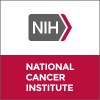
Smart Home Technologies for Assessing and Monitoring Frailty in Older Adults
FrailtyFrailty Syndrome6 moreThis project aims to address the impact of frailty on older adults, particularly its connection to cognitive impairments such as dementia. By identifying frailty in its early stages, interventions can be designed to slow down the progression of cognitive decline. To achieve this, the project plans to develop a reliable at-home monitoring system that can accurately track frailty in older adults with mild cognitive impairment or dementia. By utilizing cutting-edge technologies such as high-precision indoor positioning and home-installed sensors, referred to as zero-effort technologies (ZETs), the system will collect continuous sensor data, which will be analyzed to identify indicators of frailty.

Eltanexor (KPT-8602) With Inqovi (Decitabine-Cedazuridine) in High-Risk Myelodysplastic Syndromes...
Myelodysplastic SyndromesBackground: Myelodysplastic syndromes (MDS) are diseases that affect the bone marrow. They can inhibit the blood formation process and reduce blood cell counts. High-risk MDS can lead to leukemia. People with high-risk MDS have a low survival rate. Better treatments are needed. Objective: To test a study drug (KPT-8602), combined with another drug (Inqovi), in people with MDS. Eligibility: Adults aged 18 years and older with high-risk MDS that did not respond to treatment. Design: Participants will be screened. They will have a physical exam. They will have blood and urine tests and tests of their heart function. They may have a bone marrow biopsy: Their hip will be numbed; then a needle will be inserted to draw out a sample of soft tissue from inside the bone. They will answer questions about their quality of life. Genetic tests may be performed. KPT-8602 and Inqovi are both tablets taken by mouth. Participants will take these drugs at home on a 28-day cycle. They will take Inqovi once a day on days 1 to 5. They will take KPT-8602 on a schedule assigned by the researcher. Participants will be given a drug diary to record each dose. Participants will visit the clinic for an exam at least once in each cycle. Some tests, including the bone marrow biopsy, may be repeated. Participant will continue treatment for at least 6 cycles. If their disease improves, they may continue taking the drugs after 6 cycles. Participants will have follow-up visits at the clinic for about 8 years.

Phenotype and Epidemiology of the Polycystic Ovary Syndrome (PCOS) in Colombia (PEP - Colombia)...
Polycystic Ovary SyndromeHyperandrogenism1 moreThe goal of this observational study is to know the prevalence of PCOS among economically productive and reproductive age women from Medellín and the Valle de Aburrá, Colombia. The main questions it aims to answer are: What is the phenotypic distribution of PCOS detected in women seeking medical attention as a requirement for employment in Medellín and the Valle de Aburrá, Colombia? What is the effect of environmental factors, such as geographical location and diet, and biological factors (such as obesity and ethnicity/race) on the prevalence and phenotype of PCOS in this populatión? Participants will undergo anthropometric measurements and physical examination for hirsutism, acne, alopecia, acanthosis nigricans, and thyroid enlargement. During the initial visit, a transvaginal or transabdominal pelvic ultrasonography will be performed. A sample of venous blood will be collected in plain tubes for serum cryopreservation and for immediate glucose estimation. Some participants will be rescheduled for a second evaluation visit for additional assessment when they have a possible PCOs.

Rhu-pGSN for Acute Respiratory Distress Syndrome (ARDS)
Acute Respiratory Distress SyndromeInfectionsBTI-203 is a randomized, double-blind, placebo-controlled, multicenter, Phase 2 proof-of-concept (POC) study to evaluate the efficacy and safety of rhu-pGSN plus standard of care (SOC) in subjects with moderate-to-severe ARDS (P/F ratio ≤200) due to pneumonia or other infections. Potential subjects hospitalized with pneumonia or other infections are to be screened within 24 hours of diagnosis of ARDS.

PROFIL Study to Investigate the Effect of GPB on NfL Levels in Patients With Corticobasal Syndrome...
Corticobasal Syndrome (CBS)Corticobasal syndrome (CBS) is a rapidly progressive neurodegenerative disorder with an average survival time of about 6-8 years after the first clinical manifestation. No potent symptomatic treatment is currently available. A disease-modifying therapy does not exist either. Neuroinflammation is key to the pathogenesis in neurodegenerative diseases with Tau- and/or AD-pathology. There is strong evidence that phenylbutyrate can modulate microglial function by enhancing their phagocytic activity, most likely by epigenetic mechanisms. So the main goal of this clinical trial is to study a potential disease-modifying effect of treatment with glycerol phenylbutyrate (GPB), which is a prodrug of phenylbutyric acid, for 26 weeks assessed by the levels of the biomarker neurofilament light chain (NfL) indicating disease progression in CBS. Given the aggressive nature of CBS, it is feasible to study effects of GPB on plasma NfL levels.

Effect of Yangxinshi Tablet on Exercise Tolerance in Patients With Chronic Coronary Syndrome(MET...
Chronic Coronary SyndromeThis study adopted a randomized, double-blind, placebo-controlled, multicenter clinical design and compared the effects of Yangxinshi tablet and placebo on exercise tolerance in patients with chronic coronary syndrome (CCS).

Defibrotide Dose-escalation for SOS Post-HSCT
Sinusoidal Obstruction SyndromeVeno-occlusive DiseaseThis research study is being done to determine the safety and tolerability of increasing doses of defibrotide within a single patient with sinusoidal obstructive syndrome (SOS)/veno-occlusive disease (VOD) after hematopoietic cell transplantation (HCT) associated with either kidney and/or lung impairment that has not obtained a complete response (CR) or progressed in severity with standard doses of defibrotide.

Differences in Quality of Life After Thoracic Outlet Syndrome Surgery
Thoracic Outlet SyndromeQuality of life evaluation after thoracic outlet surgery with Quick-DASH and SF-36 forms

Effect of Short Foot Exercise in Treatment of Patients With Patellofemoral Pain Syndrome
Patellofemoral Pain SyndromePurposes of the study To investigate the effect of adding Short foot exercise on patellofemoral pain syndrome on knee Pain, Function, Balance and abductors, quadriceps Muscle strength.

Prevalence of Mast Cell Activation Syndrome in Patients With EDS With Digestive Disorders
Ehlers Danlos Hypermobile SyndromeThe aim of the study is to confirm the association between hypermobile Ehlers Danlos syndrome (hEDS) and mast cell activation syndrome (MCAS) in patients with digestive disorders managed in allergology departments.
